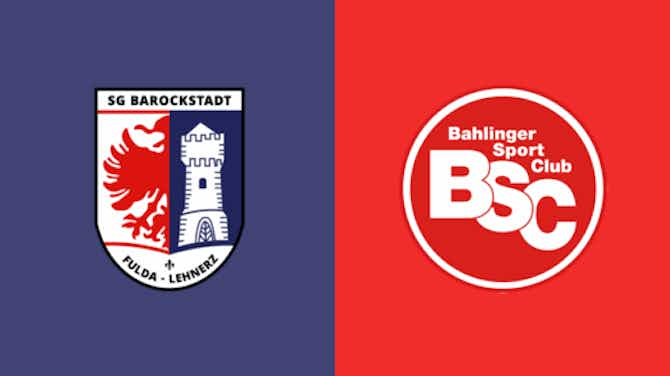Bundesliga Analysis
·28 November 2020
UEFA Champions League 2020/21: Bayern Munich vs RB Salzburg – tactical analysis

Bundesliga Analysis
·28 November 2020

It was an enticing tactical battle on Wednesday between coach Hans-Dieter Flick and Jesse Marsch, Bayern Munich entered the match to secure qualification, and Salzburg needed a win to get close to second place.
It was a really attractive tactical bicker, each team each had a really great pressure structure, so both coaches were trying to overcome their opponent’s pressure.
In this tactical analysis, we will use analysis to look at the pressure structure of the two teams, and the tactics that Bayern Munich applied to break the pressure of Salzburg. We will also explain how Marsch took advantage of Roca’s red card.
Coach Marsch preferred to play with a 4-4-1-1 formation instead of the 4-3-2-1 he played in the first fixture. However, he kept the same names that played the match in Austria.
Flick, unlike his opponent, kept the same formation but changed some names. Where Chris Richards played, and Lucas Hernandez remained at the bench, Leon Goretzka and Roca played in Joshua Kimmich and Corentin Tolisso’s place.

Bayern Munich’s pressure was excellent, to the point where the attacks that Salzburg build a clean manner were almost non-existent. Flick put in place a significant pressure structure, which allowed his players to direct the opposing team and prevent Salzburg from building a clean attack.
Bayern Munich did not press the centre-backs in the first phase, and the players were positioned narrow, to protect the depth and block all passing options.
In this picture, the two attackers are pulling back and not pressing the centre-backs, the same thing for the wings they did not mark the opponent’s full-backs, and were positioned at the deep. In this case, the ball carrier does not have any deep passing options and is forced to pass to the side.

Once the ball reaches the full-back, the winger presses it, while the striker covers the centre-back. Bayern Munich’s midfielders will follow the Salzburg pivots.
In this scenario, Thomas Müller advances to press the full-back, Serge Gnabry advances to cover the centre-back, and Roca follows the pivot of the opponent who has retreated to receive the ball and assist the ball holder.

Marsch did not put in many tactics, to get past Bayern Munich’s pressure. He has developed some ideas to benefit from the capabilities of his players and bypass the Bayern pressure.
The first idea was to play long balls towards Mërgim Berisha, to take advantage of his abilities in aerial duels, to divert the second ball towards his team-mate Sekou Koita, or to play long balls behind the opponent’s backline and take advantage of the speed of the offensive duo.

The Salzburg pressure structure was somewhat similar to Bayern’s pressure, with the wingers going to the deep, and the attackers not pressing on the centre-backs, and drawing a shape with six sides, this allowed them to protect the depth and force the centre-backs to pass to the full-backs.

When the ball reaches full-back, the winger will advance to press him, the first striker will cover the centre-back, and the second striker will mark Roca.

Bayern Munich used the half-spaces beautifully, and this helped them as an influence to overcome the pressure of Salzburg. It took advantage of a minor gap in the Salzburg structure.
We mentioned above that the attackers are not pressing on the backline and the Salzburg axes are marked Müller and Goretzka. That is why the duo was advancing to drag the pivots of Salzburg, in this way Roca would have a large space in the deep, and he could receive the ball because he was free.

The wings will not be completely deep, as they are positioned closer to the side to be ready to press if the pass is to the full-back. This way, there will be a large area in the half-spaces, and Roca can play passes towards them. For example, in this picture, Lewandowski pulled back and could receive the ball in the half-spaces.

This is a similar picture, Roca receives the ball in the empty space, and Gnabry moves to the half-spaces to receive the ball.

Flexibility and exchange of positions are one of the most critical strengths of Bayern Munich, and this feature helped them a lot in this match and made them able to overcome the pressure of Salzburg and transfer the balls to the final third.
For example, in this picture, Goretzka stepped back, and Benjamin Pavard advanced, and at the same time, Müller moved to the side. In this way, Dominik Szoboszlai was forced to step back. This means that Goretzka has three passing channels and can pass without pressure.

Another tactic used by Flick, Goretzka was falling between the centre-back, in this way forming a backline of three players. This will force winger Enock Mwepu to advance and pressure the centre-back.

Then the full-back or winger can position themselves in the empty space to receive the ball and create a 3v2 situation after Muller moves to the side.

Front line moves were also essential to create numerical superiority and help the team move the ball to the final third. For example, in this image, Gnabry and Lewandowski step back and create numerical superiority on the opponent’s pivot.

Salzburg posed a great danger to Bayern after Roca got a red card in the 66th minute, as the average xG in the first half was 1.51, while from the 61st minute to the 90th minute the xG average reached 1.94.
After the dismissal, Salzburg was able to break the pressure of Bayern Munich and was also able to create gaps in the opponent’s backline.
After Roca was sent off with a red card, Bayern Munich was playing with one player in the front line. This made the Salzburg centre-backs guarantee a numerical advantage over Lewandowski, one of the axes stationed behind him and could receive the ball without problems.

When the ball reaches the pivot, one of the Bayern Munich midfielders will be forced to advance to pressure him, in this case, there will be a gap, and the ball carrier can exploit it.

Salzburg was putting four players between the lines as well, and this was forcing the Bayern midfielders to concentrate narrowly. This way, the full-back will be free and able to move the ball to the final third.

When the ball reaches the final third, Salzburg will be able to create 5v4 situations, and in this way, he can create gaps in the backline for Bayern Munich.

Everyone who witnessed the match knew that this result was not fair to Salzburg. They were great without the ball. Bayern certainly deserves to win, given the impressive Flick’s tactics to crack down on his opponent’s tactics.
However, this is football. Bayern Munich continued to dominate the UEFA Champions League and the Bundesliga and reiterate that they cannot be stopped. Salzburg’s chances of qualifying have diminished, but who knows, football may do justice to them in the upcoming matches.






























































